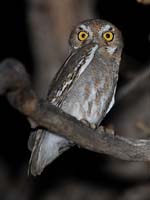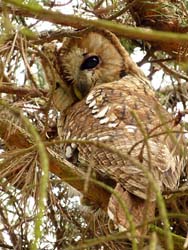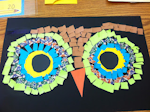Owls Theme--School-age
Owls
Things to Know
Owls are birds of prey. Owls are known for their distinctive call, nocturnal habits, and silent flight. Most owls are nocturnal, they are active at night and sleep in the day.
There are 216 different types of owls. They are sorted into two groups, barn owls and typical owls. 18 belong to the Barn Owl family and 198 belong to the typical owl family. Owls are found on all contients except Antarctica.
Video
Barn Owls

Barn owls hunt small mammals, a vast majority of the their food consist of small rodents. Because barn owls feed on small mammals they are a favorite of farmers. They have excellent hearing and can catch their prey in complete darkness. They will swallow their prey whole and
Video
Typical Owls

Great Horned Owl

Screech Owl

Elf Owl
It diet consists mostly of insects that are resting on tree branches or on the ground. Elf owls nest in abandoned nest from other species. It most likes to nest in woodpecker cavities in cacti and deciduous trees. Often times the woodpecker cavities are not abandoned, causing a competition between the owl and woodpecker. Elf owls migrate. In the spring and summer they migrate to Arizona and New Mexico. In the winter they migrate to central and southern Mexico.
Tawny Owls

Many have taken up residence in large cities, where they take shelter in abandoned buildings or the crevices of structures. The tawny owl is the most common owl in Britian. Tawny owls are Britian's most common owl. Its tu-whit tu-whoo call is very distintive and popular in fairy tales.
Video
Owls
Owl Facts
A baby owl is called an owlet.
A group of owls is called a parliament.
Owls can swivel their heads to look backwards.
Owls are nocturnal.
Owl Eyes
Owls have large forward-facing eyes. An owl is unable to move its eyes. It can swivel its head through 270 degrees because of its 14 neck vertebrae (a person has 7 vertebrae in our necks). Their binocular vision offers precise visual information needed for owls to spot and capture their prey.
Owl Pellets
Owls are not able to chew their food. Owls eat all their prey. Unlike other birds owls do not have a crop, which holds swallowed food to be digested later. The parts of their food that they can not digest is ompressed into a pellet, later the pellet is regurgitated.
Language
Recommended Book
Owl Moon by Jane Yolen
Owl Moon {Book-inspired elementary printables}
3rd grade Owl Moon landscapes
Owl Moon Video
Sites to See
Learn About Owls
Great Horn Owl-National Geographic
Owl Pages Everything about owls.
Owling North and Central American Owls, includes sounds, video, and photographs of many types of owls.
Things to Do








